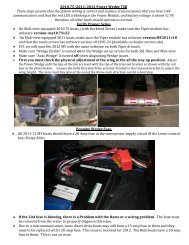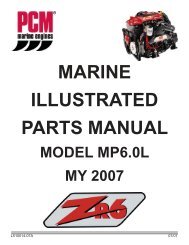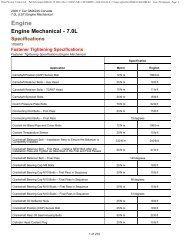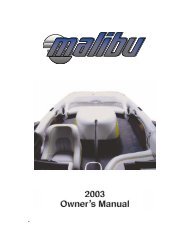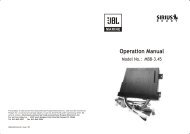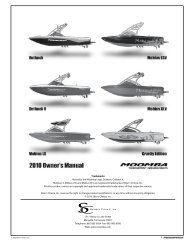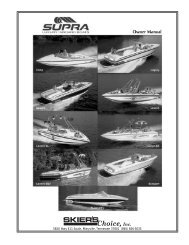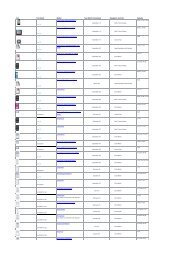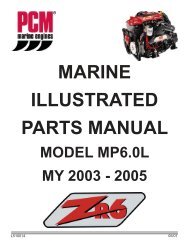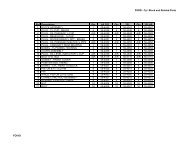Create successful ePaper yourself
Turn your PDF publications into a flip-book with our unique Google optimized e-Paper software.
When two power-driven vessels are crossing each other’s<br />
path close enough to run the risk of collision, the vessel<br />
that views the crossing vessel to the starboard (right) side<br />
must give-way.<br />
If the other vessel is to the port (left) side, maintain your<br />
course and direction, provided the other vessel gives you<br />
the right-of-way as it should.<br />
All vessels which are fishing with nets, lines or trawls<br />
are considered under International Rules to be fishing<br />
vessels. Boats with trolling lines are not considered<br />
fishing vessels.<br />
Fishing vessels have the right-of-way, regardless of<br />
position. These vessels, however, cannot impede the<br />
passage of other vessels in narrow channels.<br />
Sailing vessels should normally be given the right-of-way.<br />
The exceptions to this are:<br />
If you are passing another vessel, you are the give-way<br />
vessel. This means that the other vessel is expected<br />
to maintain its course and speed. You must stay out<br />
of its way as you clear it, altering course and speed as<br />
necessary.<br />
Conversely, if you are being passed by another vessel,<br />
you should maintain your speed and direction so that the<br />
other vessel can steer itself around you.<br />
There are three other rules to always remember when<br />
driving your boat around other vessels.<br />
When navigating in narrow channels, you should keep<br />
to the right when it is safe and practical to do so. If the<br />
operator of a power-driven vessel is preparing to go<br />
around a bend that may obstruct the view of other water<br />
vessels, the operator should sound a prolonged blast on<br />
the whistle or horn—four to six seconds.<br />
If another vessel is around the bend, it too should sound<br />
the whistle or horn. Even if no reply is heard, however,<br />
the vessel should still proceed around the bend with<br />
caution.<br />
If you navigate these type of waters, you should carry a<br />
portable air horn, which are available from local marine<br />
supply stores.<br />
- When the sailing vessel is overtaking the power-drive<br />
vessel, the power-driven vessel has the right-of-way.<br />
- Sailing vessels should keep clear of any fishing vessel.<br />
- In a narrow channel, a sailing vessel should not<br />
hamper the safe passage of a power-driven vessel<br />
which can navigate only in such a channel.<br />
The waters of the United States are marked for safe<br />
navigation by the lateral system of buoyage. The<br />
markers and buoys you will encounter have an<br />
arrangement of shapes, colors, numbers and lights to<br />
show which side of the buoy a boater should pass when<br />
navigating in a particular direction.<br />
The markings on these buoys are oriented from the<br />
perspective of being entered from seaward while the<br />
boater is going towards the port. This means that red<br />
buoys are passed on the starboard (right) side when<br />
proceeding from open water into port, and black buoys<br />
are to port (left) side. When navigating out of port, your<br />
position to the buoys should be reversed: red buoys to<br />
port and black buoys to starboard.<br />
Many boating bodies of water are entirely within the<br />
boundaries of a single state. The Uniform State<br />
Waterway Marking Systems has been devised for<br />
these waters. This system uses buoys and signs with<br />
distinctive shapes and colors to show regulatory or<br />
advisory information.<br />
These markers are white with black letters and orange<br />
borders. The information signifies speed zones,<br />
restricted areas, danger areas and general information.<br />
Remember: Markings may vary by geographic location.<br />
Always consult local boating authorities before driving<br />
your boat in unfamiliar waters.<br />
(See examples of buoys and markers next page.)<br />
16 © 2008 Skier’s Choice, Inc.




